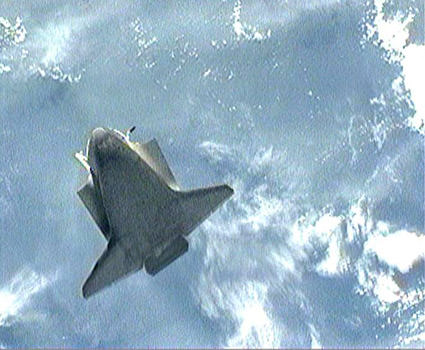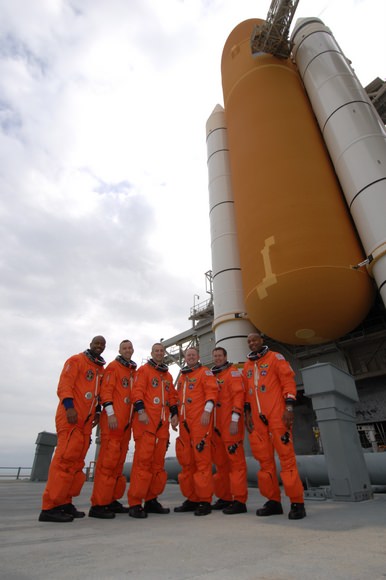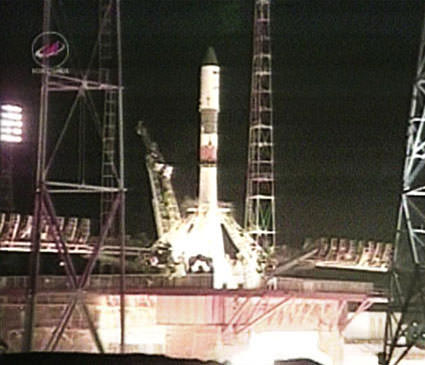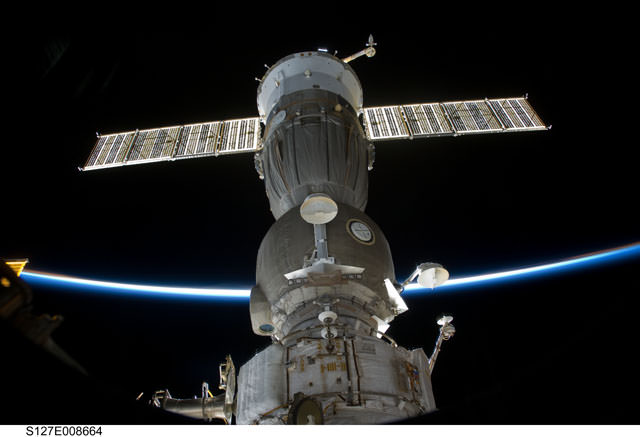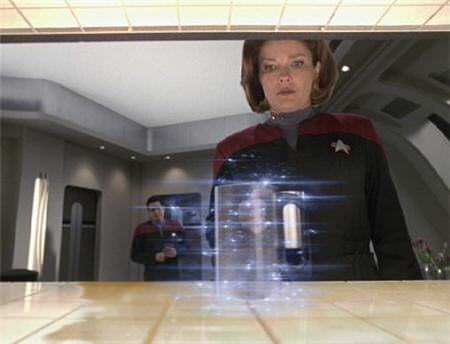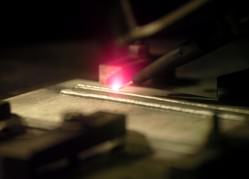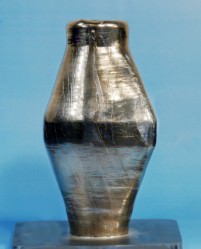(Editor’s note: Ken Kremer is in Florida covering the STS-129 mission for Universe Today)
The astronaut crews for the International Space Station and Space Shuttle Atlantis united as one team in space on Wednesday when Atlantis successfully docked with the ISS at 11:51PM EST. Preluded by some of the most spectacular footage ever of the shuttle “belly flip” or the Rendezvous Pitch Manuaever (RPM), docking occurred in orbital darkness about 220 miles high above earth and directly between Australia and Tasmania. The shuttle astronauts were welcomed aboard the ISS and the jubilant crews exchanged bear hugs, handshakes and high fives inside the Harmony module.
Thursday morning at 9:24 a.m. EST, STS-129 spacewalkers Mike Foreman and Robert Satcher headed outside for the first spacewalk of the mission.
The shuttle docked at a port on Harmony, located on the US end of the station and parallel to the earth below. Russian Soyuz manned capsules dock at the opposite end of ISS on the Russian side of the station. The ISS currently weighs over 800,000 pounds.
After a series of leak checks, hatches between the two vehicles were at last opened at 1:28 PM EST, at 1 day and 23 hours mission elapsed time for Atlantis marking the start of joint operations. ISS Commander Frank DeWinne from Belgium performed a brief ceremony. With an overall crew of 12 people representing many ISS partners, Harmony was rather crowded. The shuttle astronauts received a safety briefing and tour.
Later in the day, Nicolle Stott’s tenure as an ISS crew member ended and she transitioned over to become an official member of the shuttle crew for her return to earth. She will be seated on a special recumbent seat brought aloft by Atlantis. Stott has spent 3 months aboard the station.
[/caption]
Commander Charles “Scorch” Hobaugh piloted Atlantis for the final approach to the ISS from behind and below. After guiding the shuttle to a distance of 600 ft he initiated a spectacular back flip, known as the Rendezvous Pitch Maneuver (RPM), about 30 minutes prior to docking. Hobaugh began the now standard 360 degree back flip maneuver while flying in formation with the ISS at Mach 25 above the Amazon.
The purpose is to collect obtain high resolution imagery of the delicate heat shield tiles which protect the orbiter during the searing heat of reentry. The photos are carefully inspected to look for any signs of damage to the over 20,000 tiles before NASA commits the shuttle to landing back on earth.
Why is this photography important? Because any heat shield leak can be catastrophic for the vehicle and crew. That lesson was tragically learned during the reentry of Columbia.
Station astronauts Jeff Williams and Nicole Stott had about 90 seconds to photograph Atlantis’ belly while aiming 800 mm and 400 mm telephoto lenses respectively through portholes on the Russian Zvezda module. They snapped hundreds of digital photographs which were quickly down linked for analysis by teams waiting in Houston. The spectacular show was carried live on NASA TV.
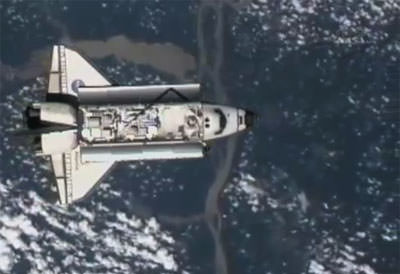
With Atlantis cargo bay pointing towards the ISS the RPM began with a dramatic pitch of the nose upwards and a stunningly beautiful view of earth in the background. Continuing on a full circular path, the shuttle spun around until the bright belly nearly filled the TV screen. Individual tiles and even the wheels wells were easily discernible as the spin progressed unabated. Momentarily the shuttle was again oriented perpendicularly as the tail faced the ISS with a fantastic view directly down into the shuttle’s three main engines and OMS pod. Finally the Atlantis shuttle returned to the same cargo bay orientation from which it started.
The RPM back flip is true spaceflight and looks like something straight out of a futuristic science fiction TV show or movie like my favorites, Star Trek and Babylon 5. But this is real and it’s happening today. And there is nothing routine about it. Make no mistake. Spaceflight is a highly risky business. And highly rewarding. Only a thin line separates life and death.
In the darkness of space, Hobaugh then closed in on the ISS at 0.2 ft per second. For the last 100 feet, Atlantis gradually slowed even further precisely aligning with the ISS until a flawless docking at 0.1 feet per second. Thrusters fired post contact to force the two docking ports together.
A spring loaded docking system damps out the relative motions of the ISS and shuttle over several minutes. The docking ring was then withdrawn to allow a hard mate between the two vehicles.
The astronauts wasted no time and their workload began right away today. Less than 90 minutes after hatch opening the first of two on board Express Logistics Carriers, dubbed ELC 1, was plucked out of the cargo bay by the shuttle arm. ELC 1 was then handed off to the station arm (Canadarm 2) which plugged it into an earth facing attach point on the ISS port side backbone truss at 4:27 PM. During the back flip and docking sequence approach, the shuttles robotic arm could be seen extending outwards from the cargo bay and attached to the 14,000 pound ELC 1.
The hugh ELC’s measuring 16 ft x 14 ft are designed to hold large space parts like the control moment gyroscopes (CMG’s) which provide orientation control for the station. The ELC’s are brand new equipment provided by NASA Goddard and flying for the first time on a shuttle. Also attached to ELC 1 are the ammonia and nitrogen tank assemblies and a battery charger discharge unit. There are some open attach sites to accommodate new spares brought up on future flights.
The first of three planned spacewalks, or EVA’s, is slated for Thursday at 9 AM and will last about 6½ hours. The astronauts quickly moved their space suits into the stations Quest airlock module to begin configuring all equipment needed. The two spacewalkers will spend the night “camped out” inside Quest to acclimate their bodies and purge nitrogen from their bloodstreams, preventing decompression sickness once they move out into the vacuum of space.
This mission will insure that the ISS has spare parts to sustain operations for several years to come. Having these spare components already on board will enormously simplify ISS planning. Of course, the unexpected can always happen. And that is the impending difficulty caused by the looming retirement of the shuttle.
Potentially the ISS could operate for another 10 years to 2020. Currently the ISS is only funded through 2015 and that’s another decision for President Obama on his packed plate. The other ISS partners, especially Russia, favor an ISS life extension as it just now finally reaches its full science capability.
Ken Kremer’s website
Read my earlier reports from KSC on the flight of Atlantis and Atlas launch attempt here:
Atlantis Roars to Space for Trek to ISS
Tweeters and Atlantis Ready for Launch
Clock Ticking for Shuttle Atlantis on Critical Resupply Mission
Atlas Launch halted by ORCA; Shuttle Atlantis Next in Line

